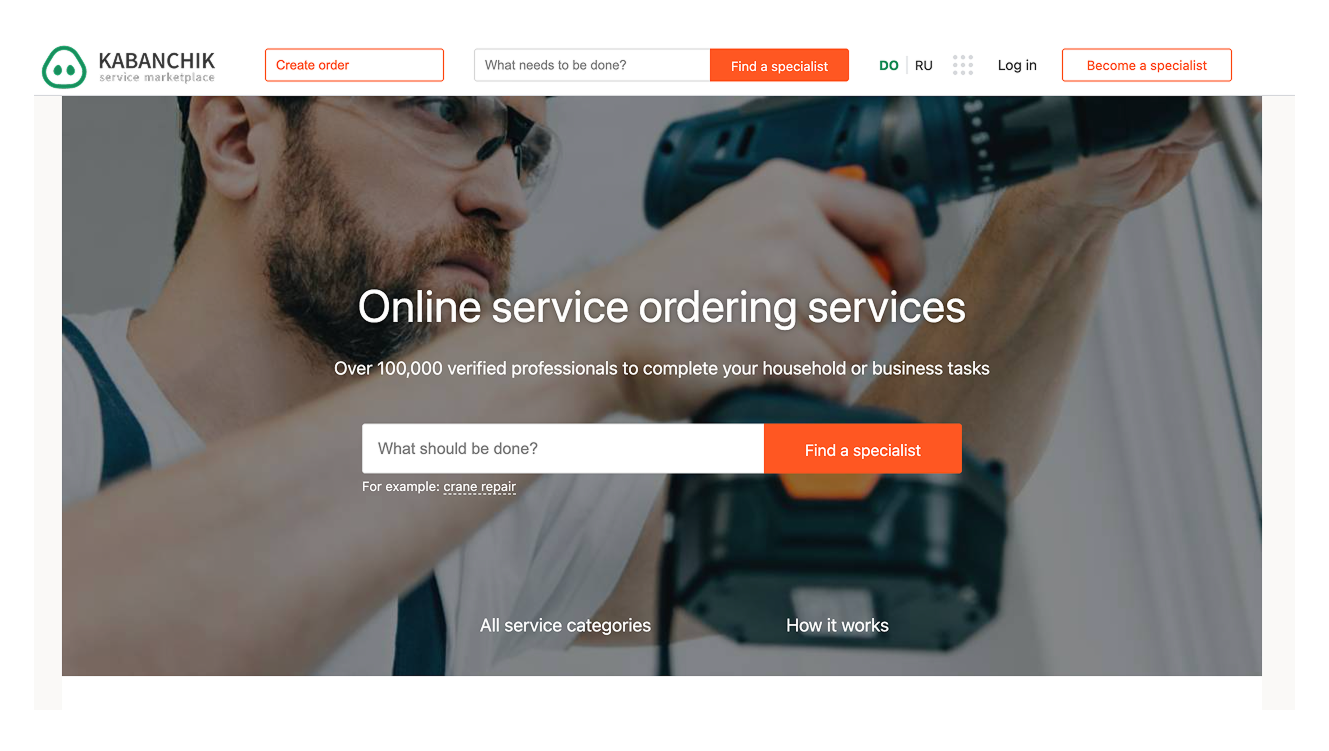Key Takeaway
By adding a text explaining the benefits of setting a higher job price, Kabanchik.ua increased average revenue per user by 8% and average order value by 17%. A small UX adjustment helped users understand how pricing affects service quality, and motivated them to increase their bids.
Client Overview
Kabanchik.ua is a leading two-way marketplace that connects users with service providers for one-off jobs in areas such as home repairs, cleaning, and delivery. Contractors bid on posted jobs, and users select a provider based on price, rating, and experience.

Opportunity Background
On Kabanchik.ua, each job type has a default suggested price, but users can adjust it manually. Analysis showed that a proportion of users consistently set job prices 20-30% higher than the default. To understand this behaviour, we conducted user testing and interviews.
We discovered that users who increased their prices did so deliberately to attract higher-quality contractors, specifically those with "Top Contractor" badges earned through a strong track record of successful jobs and positive reviews.
Solution
We added a tooltip to the job posting form encouraging users to increase their price by 20% to attract more top contractors. The message was pre-expanded and partially blocked the form, requiring users to dismiss it before proceeding. This design ensured high visibility and engagement with the message.
The tooltip dynamically displayed the adjusted price, helping users clearly understand the proposed increase and its perceived value.
Results
The tooltip variation produced an 8% increase in average revenue per user and a 17% increase in average order value, confirming that value framing at the point of form entry can influence pricing behaviour.